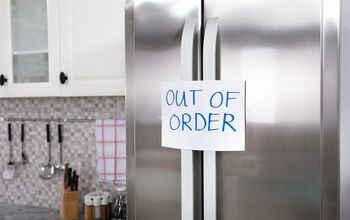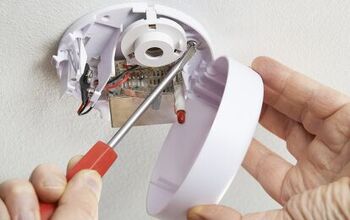How Long Before You Can Walk On New Concrete? (Find Out Now!)

If you walk on any city street, you’ll eventually see a concrete sidewalk that has handprints on it, or maybe a cute signature. It’s cute, but if you want to pour your concrete, you don’t want footprints on it. To avoid footprints or depressions in newly-poured concrete, you need to know when it’s safe to walk on it. But, when is that moment going to happen?
It’s best to wait a full 24 hours before you attempt to walk on concrete. Even after a full day of curing, there is a chance that it will not be able to withstand more extreme weights, car tracks, sudden shifts, or claws from pets walking on it. To stay on the safe side, wait at least ten days before any heavy use.
Nothing would make a typical homeowner cringe more than seeing people create new prints all over their freshly-poured sidewalk. If you want to know how to prevent it from happening to you, we’ve got the answers.
Do You Need Concrete, Brick, or Stone Pros?
Get free, zero-commitment quotes from pro contractors near you.

How Long Does It Take Concrete To Cure?
This is a bit of a loaded question. Curing takes place in several steps. How much pressure you can place on your concrete will vary over the course of a month or so. Here’s what you need to know:
- Rain will not damage concrete if it’s four to eight hours after being poured. Prior to that, the damage may include pitting and pooling.
- It takes 24 to 48 hours for concrete to be strong enough to walk on. 48 hours is only true if you are walking a dog, are over 350 pounds, or if you poured your concrete on a wet day. Within the first day of curing, it’s best to limit your walking to light strolls. Doing the twist, jumping rope, or similar behavior is not smart!
- It will take up to a week for your concrete to partially cure. At this point, you should be able to drive and operate machinery on your concrete.
- The concrete in question will take a total of 28 to fully cure. Once this happens, it’s fully set and will be able to withstand all the regular rigors of concrete.
What About Quick Cure Concrete?
“Fast-Setting Concretes” are designed to harden faster than most other types. How much faster they set can vary from brand to brand. Some of these concrete types can set hard in as little as 20 to 40 minutes. While this may sound great for projects, it’s important to realize that some projects cannot use this type of concrete.
Prior to buying a bag of concrete that hardens quickly, ask a sales associate if they would recommend this type of concrete for the project you want. If they say no, do not buy that concrete. Stick to the older stuff instead.
How Long Should I Wait to Put Furniture on New Concrete?
While foot traffic (including pets) should not be allowed on freshly poured concrete for at least 24 hours, other circumstances are different. You should wait no less than 10 days to put furniture on new concrete or drive light vehicles on the surface. However, when it comes to heavy duty pick-up trucks and RVs, you’ll want to wait as little as 28 days before driving them on new concrete.
Do You Have to Mark Off Concrete That Is Freshly Poured?
Whether or not you are legally required to mark off freshly poured concrete varies from jurisdiction to jurisdiction. However, it’s both good form and a smart way to avoid a lawsuit. It’s also a smart insurance thing, since most insurers will not be willing to cover injuries that could’ve been prevented through a “wet cement” tape.
If you do not mark off areas that have wet concrete, you put yourself at risk for a civil suit. Should someone fall into the concrete as a result of not having a warning sign, you would be most likely liable for negligence. If you aren’t sure if you should cordon the area off, err on the side of caution.
Is Stepping In Wet Concrete Dangerous?
While many people often laugh it off as a funny occurrence, stepping in wet concrete can be dangerous. If you step in concrete that hasn’t set, it becomes exceedingly easy to twist your ankle or trip as a result of bad concrete. This can lead to a major fall, which can lead to fractured ankles.
The bigger issue, though, is getting concrete on your skin. If not addressed immediately, the concrete’s alkalinity can kill your skin cells. This is called “concrete poisoning,” and it can be very serious. People who are exposed to concrete can get full skin necrosis and burns. In some rare cases, it’s possible to have to amputate the appendage that was dipped in concrete. It’s painful, to say the least.
What Should You Do If You Stepped In Concrete?
If you made the terrible mistake of stepping in wet concrete, the first thing you should do is get away from the concrete immediately and inspect your clothing. If none of the concrete has touched your skin, you should be fine. Just remove the articles of clothing and seek medical attention if you twisted your ankle.
If you stepped in concrete and got it on your skin, get your clothing off and flush the area out with cool water immediately. If you notice a burning sensation or if the concrete has gone on most of your body, call 911 immediately and continue to flush the area with water.
Concrete burn only really happens if you have exposed skin that touches wet concrete. That’s why the best way to prevent injury through this means is to wear protective gear, including heavy-duty gloves, a respirator, goggles, boots, and long-sleeved shirts. With less open skin to get exposed to the concrete comes less chance of a concrete burn.
Along with wearing protective gear, another important way to prevent concrete burn is to make it difficult for children and pets to access wet concrete. Cordoning the area off, having your kids away for the day, or just making sure that your partner has them in check while you work can prevent them from walking into a busy work zone.
What Should You Do If Your New Concrete Gets Smudged?
If your concrete got smudged by an errant footprint, then you have your work cut out for you. You will need to resurface your concrete. To do this, follow these steps:
- Wait for your concrete to cure. Sadly, this is a time to go to the hardware store and get some concrete patch mix that has at least 3,000 PSI. Oh, and get some bonding agent, too.
- When your concrete is cured, pressure wash it. You will need to have a clean surface to start with, and that can only happen with pressure washing. Once you’re done, start mixing your concrete per the instructions on the baggie.
- Apply a bonding agent to the concrete. This will help you make sure your concrete bonds with the new mix.
- Apply a layer of concrete patch to the area. Make sure it’s even and that it blends with the rest of the area well.
- Add a second coat, then use a concrete broom on the affected area. The brooming will help your concrete maintain a more even, easy to manage texture.
- Add a skim coat and round off corners. This gives you the full professional look that you want to have.
- Fence (or cordon) off the area, giving death stares to anyone who tries to write in the new concrete. This is optional, but you get the picture.
Do You Need Concrete, Brick, or Stone Pros?
Get free, zero-commitment quotes from pro contractors near you.

Related Questions
Is rain OK on new concrete?
Generally speaking, rain is OK on new concrete and you can even pour concrete in the rain. Instead of drying, concrete cures. Curing is more of a chemical reaction than a physical reaction, meaning rainwater will have little effect on the concrete. In fact, concrete can be cast and cured underwater, so a little rain won’t hurt!
How long should concrete cure before removing forms?
Once the concrete has hardened and cured inside of the molds that you’ve poured it into you, the formwork can be removed. This is commonly referred to as stripping or shuttering. The exact time frame that the forms must stay in place will vary from jobsite to jobsite. Though, it’s important that the formwork remains in place for as long as possible.According to the American Concrete Institute, here’s how long you should wait before removing forms based on cement type:
- ASTM C 150 Type I cement: 7 days
- ASTM C 150 Type II cement: 10 days
- ASTM C 150 Type III cement: 3 days
- ASTM C 150 Type IV or V cement: 14 days
- ASTM C 595, C 845, C 1157 cements: Varies
However, always make sure to check with your engineer on site to know the exact timeline that your concrete forms require to cure properly.

Ossiana Tepfenhart is an expert writer, focusing on interior design and general home tips. Writing is her life, and it's what she does best. Her interests include art and real estate investments.
More by Ossiana Tepfenhart




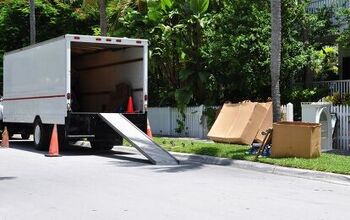





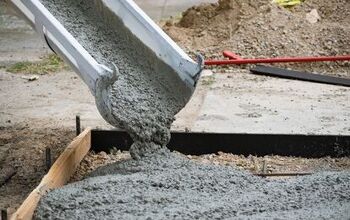
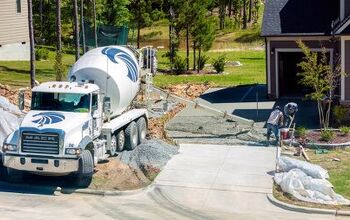

![10 Best Zero Turn Mowers – [2022 Reviews & Ultimate Buyer's Guide]](https://cdn-fastly.upgradedhome.com/media/2023/07/31/9070522/10-best-zero-turn-mowers-2022-reviews-ultimate-buyer-s-guide.jpg?size=350x220)
![Finishing Basement Without Permit [Is It Really Illegal?]](https://cdn-fastly.upgradedhome.com/media/2023/07/31/9070078/finishing-basement-without-permit-is-it-really-illegal.jpg?size=350x220)
